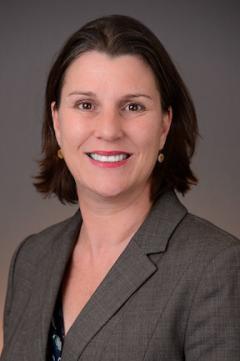More than one-third of American adults and roughly 17 percent of children in the U.S. are obese, a condition behind some of the leading causes of preventable death, including heart disease, stroke, Type 2 diabetes and cancer.
Five years ago Arizona State University launched Obesity Solutions, a uniquely transdisciplinary initiative funded by a donation from the Virginia G. Piper Charitable Trust, to address the health concern. It was spearheaded by the late Provost Emerita Elizabeth Capaldi Phillips, whose career of research on food psychology aimed to understand why we eat what we do and how we can spur behavior changes to encourage healthier lives.
Since then, over $14 million has been generated in additional research dollars through the initiative to test and share solutions and train the next generation of scientists to tackle the issue. A total of $36 million in funding for obesity-related research has been brought in across the entire university in the same time period, indicating how much ASU’s overall activity in this timely research area is growing.
“The thing that made Provost Capaldi’s vision unique among national efforts was that this initiative was truly transdisciplinary,” said Alexandra Brewis Slade, Obesity Solutions co-director and President's Professor at ASU’s School of Human Evolution and Social Change.
“Obesity isn’t caused by a single factor; it’s a complex problem with multiple layers, not just medical but also geographic, psychological and cultural. If we just come at it from one direction, we’re going to miss identifying the most effective solutions.”
Co-director of ASU Obesity Solutions Alexandra Brewis Slade.
The history of obesity in American can be traced back to the end of WWII, when widespread industrialization resulted in a shift from active jobs to more sedentary ones, along with increased access to high-calorie processed foods.
Over the years, many solutions have been offered for obesity but they mostly focused on individual behavior, which turned out to be counterproductive.
“Research shows that people don’t like to be told to lose weight,” Brewis Slade said. “It makes them anxious. It’s much better to build the environments in which healthy behaviors become the default setting.”
So for the past five years, Obesity Solutions has focused on rethinking how to approach unintended weight gain, and creating and scaling a number of signature projects in local Maricopa County communities that focus on solutions that work for real people in the real world — solutions that are easy to implement, don’t require special equipment and that actually work.
One of the most successful of these projects is FitPHX Energy Zones. Developed in partnership with the Phoenix Mayor’s Office and Department of Parks and Recreation, FitPHX Energy Zones repurpose the city’s public libraries as spaces where kids can go after school to learn from ASU student interns about nutrition and healthy living.
Among other benefits, children participating in the program showed higher rates of self-esteem, less sedentism, significant gains in health literacy, and more fruit and vegetable consumption.
The FitPHX Energy Zones project is an example of effective programming because it so cleverly addresses multiple issues at once, Brewis Slade said. Not only does it teach kids fun, easy ways to build healthy habits into their life, it does so when they’re young, which research shows is the best time to address and prevent obesity.
Mayor Greg Stanton praised the program for its innovation and effectiveness, saying, “Fighting for our kids’ health is one of the most important things we can do.”
Other similar projects: the Harmon Bike Lab in south Phoenix, where residents have access to a safe, convenient place to repair their bicycles and get help from local experts; DevilSPARC, an NIH-funded project that uses diet and exercise studies in ASU residence halls to encourage students to rethink how better social support can affect their health; and Stand and Move at Work, another NIH-funded project that uses ASU as a test-bed for demonstrating health benefits of workspace designs that encourage movement. Both DevilSPARC and Stand and Move at Work are led by faculty in the College of Health Solutions.
Obesity Solutions researchers are engaging local elementary schools through studies that look at how to improve the nutritional value of school lunches, and are redesigning school curricula to promote non-exercise activity thermogenesisThermogenesis refers to the production of heat, especially in a human or animal body. (NEAT).
Today, faculty from 22 different schools and 17 research centers are conducting externally-funded obesity research at ASU. And with an eye toward the future, Obesity Solutions also supported the establishment of a master’s degree in obesity prevention and management in 2016 to train a new generation of obesity specialists.
And while it’s true there’s no silver bullet for the widespread health challenge, Brewis Slade is sure of one thing: Obesity Solutions’ transdisciplinary approach is the key to making real progress.
“If telling people to lose weight solved the obesity epidemic we wouldn’t have one,” she said. “People are desperately trying to lose weight. But asking each of us to address it alone is a failed strategy. We need to scale it out and look at bigger issues; how we organize our work and home lives, how we educate and treat … all these factors need to be part of the design solution.”
Top photo: Maricopa elementary students prepare fresh fruit as part of a FitPHX Energy Zones lesson. Courtesy Deborah Williams
More Health and medicine

College of Health Solutions launches first-of-its-kind diagnostics industry partnership to train the workforce of tomorrow
From 2007 to 2022, cytotechnology certification examinees diminished from 246 to 109 per year. With only 19 programs in the United States, the cytology workforce that stands at the front line of…

ASU's Roybal Center aims to give older adults experiencing cognitive decline more independence
For older people living alone and suffering from cognitive decline, life can be an unsettling and sometimes scary experience.Arizona State University is out to improve that experience.Two projects…

Dynamic data duo advances health research
The latest health research promises futuristic treatments, from cancer vaccines to bioengineered organs for transplants to medical nanobots. While these technologies may one day be…



